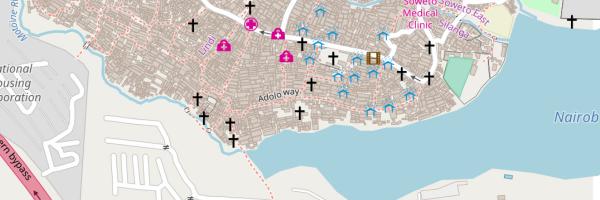How to make slums (or any other place) really smart
Just a few pills of evergreen wisdom from five years ago.

On October 6th, 2014, an article in The Guardian made two claims on the likely impact of making slums “smart”. Two claims that, in my opinion, every urban planner, everywhere, should consider carefully.
The first claim is that development professionals should be wary of smart slums repeating some of the negative impacts of ICT4D. The second, that smart slums shold be vehicles of social justice.
Sensors and smartphones. Everywhere
A smart city must be participatory, and today it can. Feedback and monitoring via smartphones and affordable sensors includes the active participation of citizens who become part of a kind of sensor citizenship.
The same technologies can make a place smart by bridging the infrastructure gap, especially in informal settlements. The Guardian cites the cases of NGOs and women’s networks mapping slums in India, to get a better share of resources, and of Map Kibera, that allows the residents of Kenya’s biggest slum monitor and report on [local] government initiatives. There are risks,of course.
The dark side of making slums smart
Done badly, smart slums just replace old problems with new ones.
First, technologies dropped into communities without first building the capacity to use them, change nothing, when they don’t reinforce existing divides. Want an example? Read about Internet Kiosks used just to watch free movies. In general, any project that simply adds visibility without agency risks reinforcing the status quo.
Second, monitoring, measuring and mapping are historical mechanisms of colonial control. Promoting them in certain areas requires caution and careful evaluation.
Third, sensors and software can only measure things that are quantifiable without any ambiguity. This can limit citizenship, rather than extending it, if citizens only collect data, but do not participate in the decisions that follow from that collection. See “visibility without agency” above.
In the end, “smart” means…
something really simple: really “smart place” projects must “involve citizens in using embedded sensor technology, to answer their own questions about their environments”.
Image source: Emancipatory Mapmaking: Lessons from Kibera
Who writes this, why, and how to help
I am Marco Fioretti, tech writer and aspiring polymath doing human-digital research and popularization.
I do it because YOUR civil rights and the quality of YOUR life depend every year more on how software is used AROUND you.
To this end, I have already shared more than a million words on this blog, without any paywall or user tracking, and am sharing the next million through a newsletter, also without any paywall.
The more direct support I get, the more I can continue to inform for free parents, teachers, decision makers, and everybody else who should know more stuff like this. You can support me with paid subscriptions to my newsletter, donations via PayPal (mfioretti@nexaima.net) or LiberaPay, or in any of the other ways listed here.THANKS for your support!